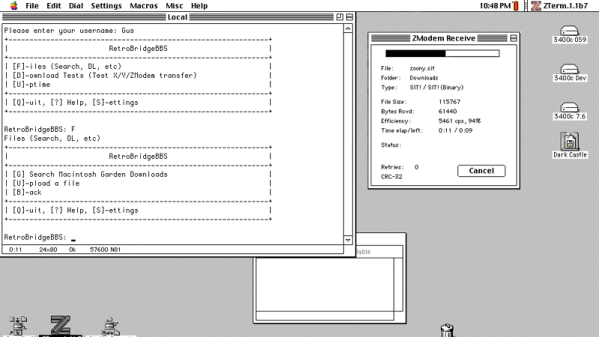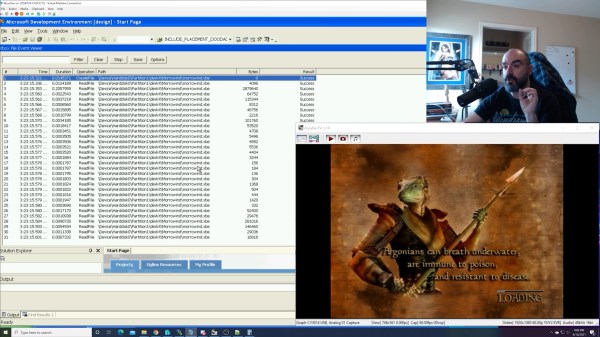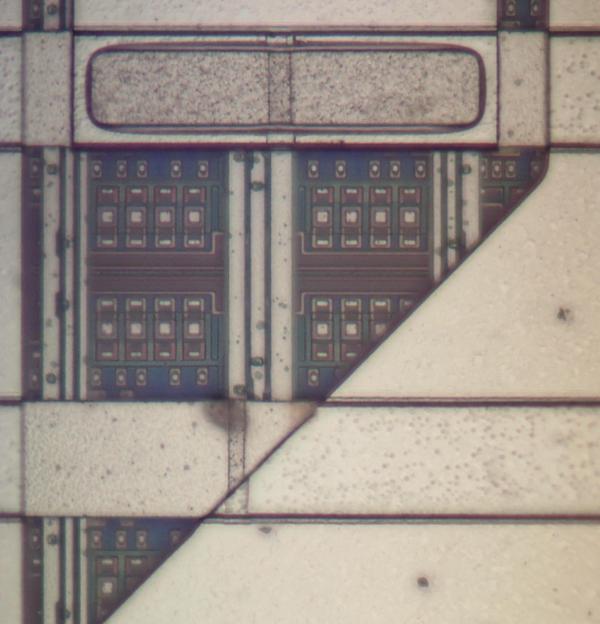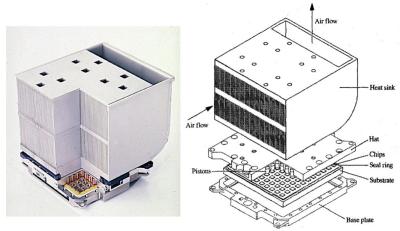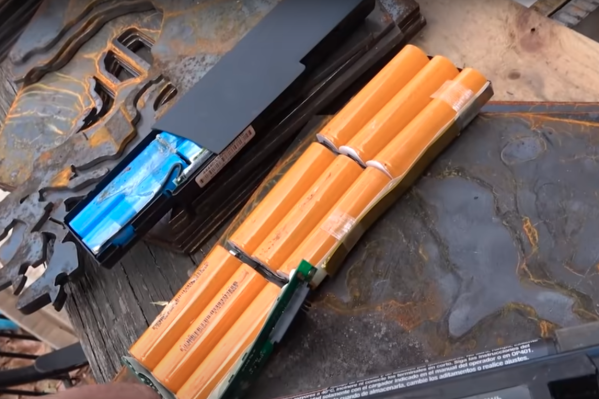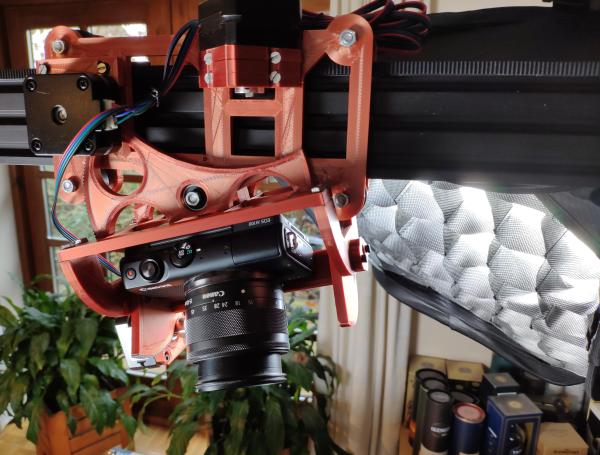Back in the golden age of modems and phone lines, bulletin board systems, or BBSes, were a great way to find new software from the comfort of your own home. Most have shut down over the past few decades, as the Internet took over as a more flexible method of cat picture software distribution. [equant] was a fan of browsing for warez through a text interface however, so recreated the experience in a way that’s useful today. The result is RetroBridgeBBS.
The software runs on a modern PC, ideally a Linux one that runs Python 3 and has a serial port. Then, you can hook up your old retro computers via serial using a null modem cable. Fire up appropriate terminal software on the retro computer and you’re rewarded with a BBS-like interface. From here, you can search selected online repositories for software, and download what you like. The host PC parses requests from the retro PC over the serial link, and shuffles back the requested files downloaded from the Internet. Currently it’s set up primarily for Macintosh users, with some useful features to avoid downloading StuffIt archives of the wrong version – a perennial frustration in the 90s. Future plans involve expanding the system to suit more platforms.
It’s technically anachronistic, but it feels like a period-correct way to get software onto a vintage computer. It’s also a great way to do so when you’re lacking appropriate floppy hardware, hard disk emulators, or network cards – all of which can be expensive and in short supply. There’s other ways to go about it, too, of course – you can do some nifty things with an ESP8266, don’t you know! Video after the break.
Continue reading “A Faux BBS Gets Software On To Your Vintage Machines”

